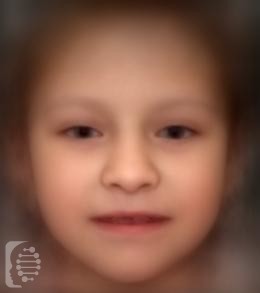What is Focal Dermal Hypoplasia (FDH)?
Focal Dermal Hypoplasia, commonly known as Goltz syndrome, is a rare genetic disorder that primarily affects females.
90% of those diagnosed with the syndrome are female. Males may have only very mild symptoms. Generally, the syndrome in its full form is fatal for males very early in their development.
As a multi-system disorder, it affects multiple parts of the body in affected individuals.
Syndrome Synonyms:
FDH Focal dermal hypoplasia FODH; DHOF Goltz Syndrome; Goltz-Gorlin Syndrome; Gorlin-Goltz syndrome
What gene change causes Focal Dermal Hypoplasia (FDH)?
The syndrome is caused by changes to the PORCN syndrome. It is inherited in an X-linked dominant pattern.
With syndromes inherited in an X-linked dominant pattern, a mutation in just one of the copies of the gene, causes the syndrome. This can be in one of the female X chromosomes, and in the one X chromosomes males have. Males tend to have more severe symptoms than females.
What gene change causes Focal Dermal Hypoplasia (FDH)?
Goltz syndrome is known as a multi-system disorder, meaning it affects many different parts of the body.
The main syndromes affect the skin of affected individuals, as well as the hands, feet, and eyes.
These symptoms might include papilloma, or wart-like growths that develop in individuals with age. They can be found all over the body including the gums, tongue, lips, nose, genitalia, and anus.
Individuals may have issues with either excessive sweating or conversely an inability to sweat, particularly on their hands and feet.
Other physical features of the syndrome include drooping eyelids, defects in the iris or retina, small or missing eyes, widely spaced eyes, and crossed eyes. Individuals may have missing digits, or digits that have fused. Features relating to the mouth might include dental and teeth abnormalities, and a cleft lip and palate.
Possible clinical traits/features:
Mixed hearing impairment, Multicystic kidney dysplasia, Abnormal adipose tissue morphology, Abnormality of dental morphology, Abnormality of dental enamel, Abdominal pain, Abnormal localization of kidney, Neoplasm of the skeletal system, Narrow nasal bridge, Low-set ears, Low-set, posteriorly rotated ears, Lower limb asymmetry, Linear hyperpigmentation, Labial hypoplasia, Joint laxity, Iris coloboma, Microphthalmia, Midclavicular aplasia, Midclavicular hypoplasia, Myelomeningocele, Intestinal malrotation, Intellectual disability, Inguinal hernia, Hydronephrosis, Hydrocephalus, Horseshoe kidney, Hiatus hernia, Short stature, Opacification of the corneal stroma, Cognitive impairment, Short finger, Visual impairment, Short phalanx of finger, Hypermelanotic macule, Short ribs, Hypoplastic nipples, Hypodontia, Hypoplasia of dental enamel, Thin skin, Telangiectasia, Postaxial hand polydactyly, Pointed chin, Foot polydactyly, Hand polydactyly, Nystagmus, Optic atrophy, Osteopathia striata, Foot oligodactyly.
How is it diagnosed?
To find out if someone has a diagnosis of Focal Dermal Hypoplasia (FDH), it is important to have a consultation and evaluation with a clinical genetic specialist. Specialists may also suggest specific genetic testing or other types of tests to help reach a diagnosis. FDNA’s AI technology can help speed up the diagnostic process by analyzing facial features and other health information.

